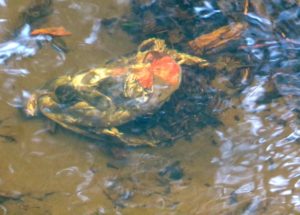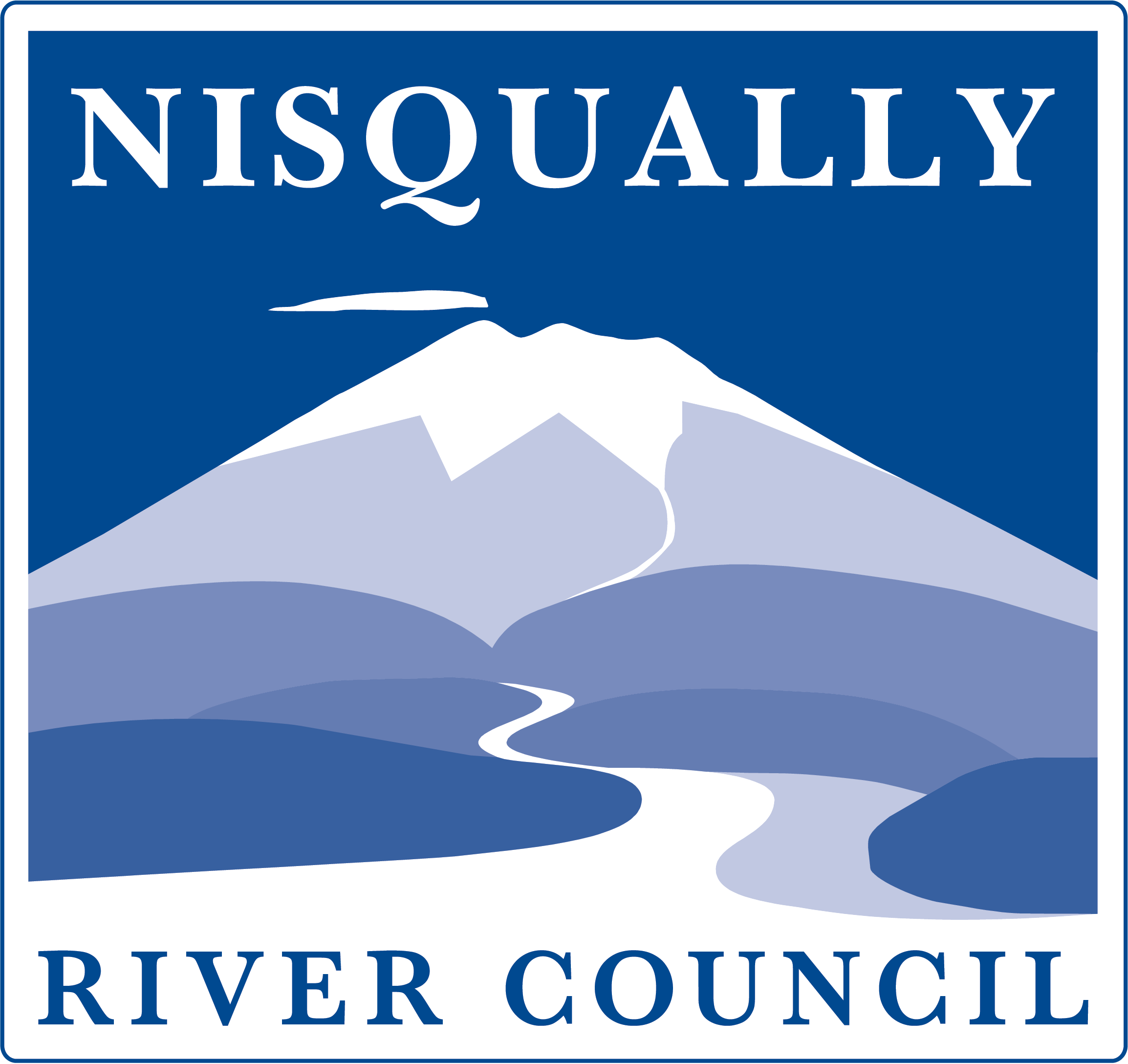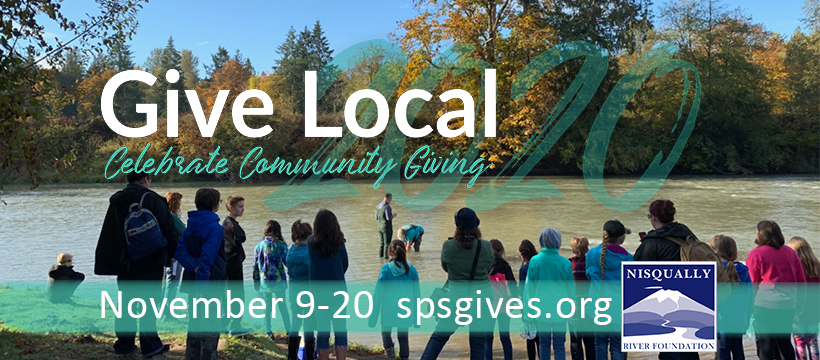The Nisqually River and its tributaries are home to 5 species of salmon: Chinook, Steelhead, coho, chum and pink salmon. Despite being one of the healthiest watersheds in western Washington, several of our salmon species are struggling. Both the Chinook and Steelhead are listed as threatened species under the Endangered Species Act, and human influences have limited the areas that salmon are able to access for spawning. The Nisqually Indian Tribe works as the lead entity in salmon recovery within the Nisqually Watershed and invests millions of dollars in projects to ensure healthy returns for future generations. The Nisqually River Council, Nisqually Land Trust, South Puget Sound Salmon Enhancement and countless other partners have worked in partnership with the Tribe to restore habitats and promote healthy salmon populations.
In early December, it became clear that some of our hard work has paid off! Adult coho salmon were spotted by local landowners in Elbow Lake Creek — the first time they’d been seen in that particular location in over 30 years! This week, Ed Kenney, a long time volunteer and salmon watcher, shares his thoughts on why the spotting is so significant. Special thanks to David Detrick, Editor-in-Chief at IFlyFishMontana and Nisqually Watershed resident, for sharing his amazing video footage!
These coho salmon are starting to decompose as a natural process during spawning. Elbow Lake Creek has been receiving continued conservation from the Nisqually Land Trust and other conservation efforts. I grew up catching crawdads in this creek 30 years ago and have never seen a salmon on this creek or a coho this close. #washington #iflyfishmontana #flyfishingnation #flyfishingjunkie #flyfishingaddict #flyfishing #pnw #coho #salmon #repyourwater #thetugisthedrug #conservation @iflyfishmontana @nisquallylandtrust
Posted by IFlyFishMontana on Thursday, December 1, 2016
My neighbors and I are so excited by this year’s late fall sightings of coho salmon spawning in the Powell Creek and Elbow Lake Creek wetlands that we can barely contain ourselves!
We have salmon fighting, salmon splashing, salmon tail-walking and salmon quivering as they spawn!
When I first observed coho spawning in our creek in 1980, I had no idea that I wouldn’t see any spawning again until 2016.

My wife and I moved to Powell Creek and built our solar-powered log cabin in 1980, but at first we had no well. Our drinking water came directly from the creek and we would often see coho salmon spawning in the beautiful gravels of Powell Creek, sometimes even in late February, as we filled our 5 gallon buckets. I knew they were coho because, as a frequent salmon and steelhead fisherman, I saw the white lips, maroon spawning colors and aggressively hooked jaws of the males.
Then one year no salmon returned. We thought maybe it was just a bad year for salmon. The next year there were no salmon . . . and no salmon the next. We weren’t aware at first that three culverts a couple miles below our property had failed and the salmon could no longer migrate upstream. When efforts to get the local timber companies, state and county agencies to repair these culverts yielded no results, my two sons decided to raise Nisqually coho in our creek over a three year period, sending over a million baby coho salmon back into the Powell Creek system.
It was tough to see so many carcasses of dead salmon below the failed culverts downstream in the years that followed.
Meanwhile the Nisqually Land Trust had begun to buy up Powell Creek property, starting in 1990 with the purchase of a third of an acre. Sixteen years later a landmark purchase of 260 acres followed and now the Land Trust owns over 450 acres of Powell and Elbow Lake Creek property below my house. The Land Trust worked with The Nisqually Tribe, The Nisqually River Council and other groups to prepare the way for this year’s coho return.
Neighbors who live closest to the creek have seen a couple of coho each year since the three failed culverts were removed by South Puget Sound Salmon Enhancement in 2008 and a 50 foot long bridge was installed in 2009. “Salmon watchers,” volunteering for the tribe by spending 15 minutes a week at key sites, have seen a couple more. Before the December 1st salmon spawning event filmed by neighbor David Detrick, I had only seen a couple of single coho females in the hundreds of hours I had spent walking the creeks. After last year, which featured the lowest coho return on the Nisqually in living memory, I had almost decided to abandon any hope of ever spotting coho again in my creek.
Now they’re back!
This video provided by David Detrick, Editor in Chief of IFlyFishMontana. Check out more videos on Facebook!
How to Share With Just Friends
How to share with just friends.
Posted by Facebook on Friday, December 5, 2014




